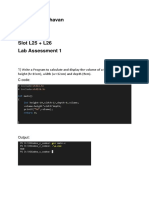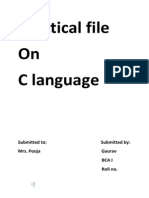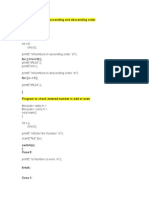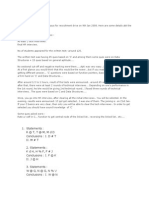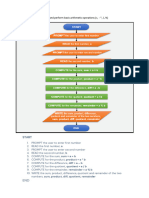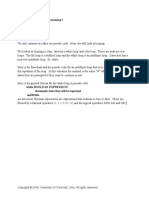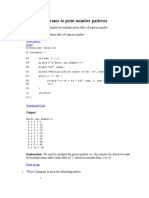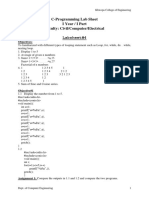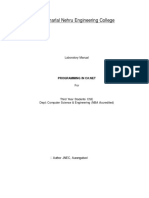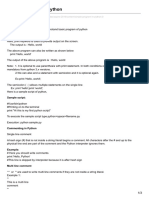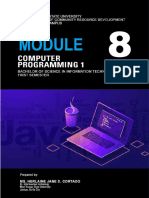0% found this document useful (0 votes)
45 views9 pagesSOL Computer Programming MS Winter 2024 25
This document outlines the Winter Mid-Semester Examination for Computer Programming at the Indian Institute of Technology (ISM), Dhanbad, detailing the structure, evaluation schemes, and sample questions for both parts of the exam. Part A focuses on programming concepts, including minimum value calculations, loop comparisons, and diamond pattern printing, while Part B covers flowcharts, substring generation, and array manipulations. Each question includes a specific evaluation scheme to guide grading based on correctness and completeness.
Uploaded by
Chenduluru Venkat SoneeshCopyright
© © All Rights Reserved
We take content rights seriously. If you suspect this is your content, claim it here.
Available Formats
Download as PDF, TXT or read online on Scribd
0% found this document useful (0 votes)
45 views9 pagesSOL Computer Programming MS Winter 2024 25
This document outlines the Winter Mid-Semester Examination for Computer Programming at the Indian Institute of Technology (ISM), Dhanbad, detailing the structure, evaluation schemes, and sample questions for both parts of the exam. Part A focuses on programming concepts, including minimum value calculations, loop comparisons, and diamond pattern printing, while Part B covers flowcharts, substring generation, and array manipulations. Each question includes a specific evaluation scheme to guide grading based on correctness and completeness.
Uploaded by
Chenduluru Venkat SoneeshCopyright
© © All Rights Reserved
We take content rights seriously. If you suspect this is your content, claim it here.
Available Formats
Download as PDF, TXT or read online on Scribd
/ 9









